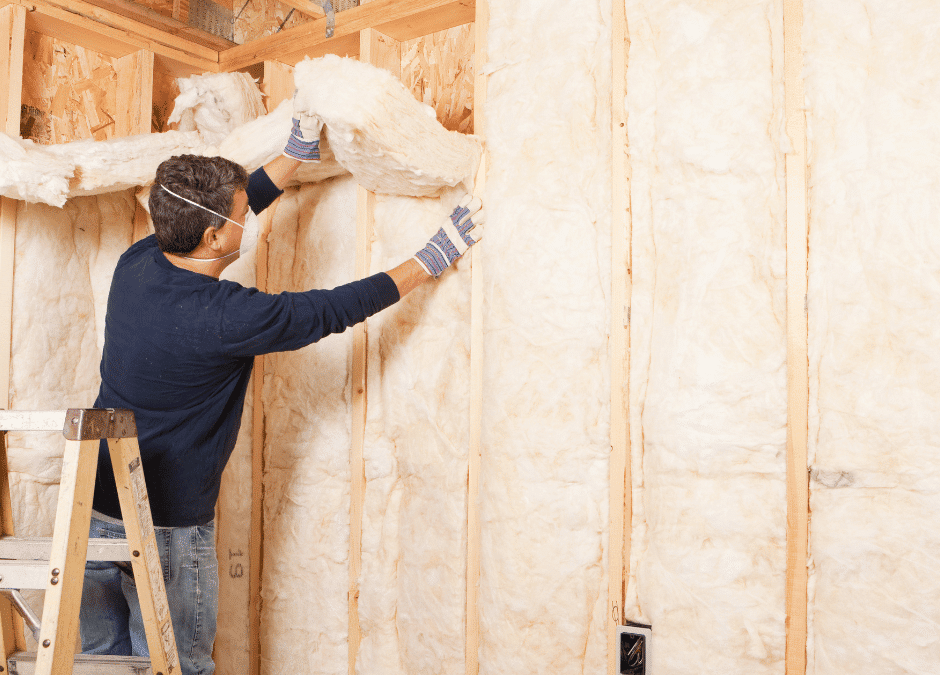Insulation is critical to enhancing the energy efficiency of any home. It effectively manages the heat exchange, preventing unnecessary heat loss in winter and heat gain in summer. This reduces your energy consumption and minimizes the strain on your heating and cooling systems, extending their lifespan. Upgrading your insulation can result in significant cost savings and contribute to a healthier planet by reducing your carbon footprint. Discover how better insulation can transform your home into a more energy-efficient and comfortable living space.
Understanding Insulation: What It Is and How It Works
Insulation is a barrier against heat loss and gain, integral to maintaining energy efficiency in homes. It consists of materials that have a high resistance to heat flow, known as R-values. The higher the R-value, the better the material’s insulating properties. Common insulation materials include fiberglass, foam, and cellulose, each with unique properties suited to different applications. Understanding how insulation works is vital for any homeowner looking to improve their home’s energy performance and reduce utility costs.
The Impact of Insulation on Heating and Cooling Costs
Insulation is an investment that pays off by significantly reducing your home’s heating and cooling costs. By maintaining a more stable indoor temperature, insulation decreases the need for continuous heating and cooling, which can lead to lower energy bills. Additionally, it helps maintain a consistent comfort level throughout the seasons, which means less tweaking of thermostats and fewer hot or cold spots in your home. The right insulation upgrades can save homeowners up to 30% on their energy bills. This makes insulation a smart financial and environmental choice for any property owner.
Types of Insulation Materials and Their Efficiency Ratings
Choosing the right insulation for your home involves understanding the different materials available and their thermal properties. Each type has its benefits and is suited to specific applications, effectively enhancing your home’s energy efficiency.
- Fiberglass Insulation: This common type of insulation is made from fine glass fibers and is best for large areas like attics. Fiberglass is cost-effective and offers good thermal resistance, making it a popular choice among homeowners.
- Foam Insulation: Ideal for sealing air leaks and insulating irregular spaces. Spray foam expands to fill gaps, creating a tight barrier that improves both thermal resistance and air tightness.
- Cellulose Insulation: Cellulose is an eco-friendly option made from recycled paper products. It is treated with fire retardants to effectively block air leaks and to improve energy efficiency.
- Rock Wool Insulation: Derived from basalt rock and recycled slag, rock wool is highly fire-resistant. It also provides excellent soundproofing, making it ideal for use in interior walls.
- Reflective Insulation: This type works by reflecting radiant heat rather than absorbing it. Suitable for hot climates, reflective insulation is often used in attics to reduce cooling costs.
- Rigid Foam Boards: These boards are excellent for insulating exterior walls and basement walls. Rigid foam has a high R-value per inch and is excellent for insulating thin spaces.
How to Assess Your Home’s Insulation Needs
Evaluating your home’s current insulation is the first step toward improved energy efficiency. Homeowners should look for signs of old or deteriorating insulation, especially in critical areas like attics, walls, and basements. An energy audit can provide a detailed analysis of where heat loss occurs and what insulation would be most effective. Infrared cameras are particularly useful in detecting hidden leaks and cold spots within walls and ceilings. By assessing your insulation needs, you can target upgrades that will provide the best return on investment and energy savings.
Installation Tips: Best Practices for Maximizing Insulation Effectiveness
Correct installation is crucial for the effectiveness of insulation. Ensure that all spaces are evenly covered without gaps, which can lead to heat loss. It’s also essential to consider factors like ventilation and moisture control, which can affect insulation performance. Using a professional installer can help avoid common pitfalls such as compressing material, which decreases its insulative properties. They can also ensure that insulation is complemented with proper air sealing to enhance energy efficiency. Follow these tips to ensure your insulation performs optimally, reducing energy bills and improving indoor comfort.
Contact Us for Insulation Services
Upgrading your home’s insulation is a powerful step toward more sustainable living and significant cost savings. South Atlanta Insulation Experts are dedicated to helping you optimize your energy efficiency through high-quality insulation services. Choosing the right materials and ensuring proper installation can enhance your home’s comfort and drastically reduce your energy expenses. Contact us to explore how our tailored insulation solutions can lead to a healthier, more energy-efficient home. Let us help you make the smart move towards a greener, more economical future.

Recent Comments